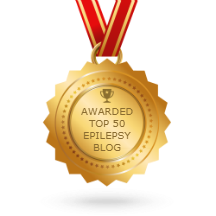 Can you believe that Thanksgiving is just 9 days away? If you have a child on the ketogenic diet for seizures, you may be feeling stressed about managing the diet on such a food-focused holiday. For today’s post, I’ve compiled some recipes and tips to help you ensure that your little one has an enjoyable, keto-friendly Thanksgiving.
Can you believe that Thanksgiving is just 9 days away? If you have a child on the ketogenic diet for seizures, you may be feeling stressed about managing the diet on such a food-focused holiday. For today’s post, I’ve compiled some recipes and tips to help you ensure that your little one has an enjoyable, keto-friendly Thanksgiving.
Preparing a Keto-Friendly Thanksgiving Meal:
Many parents like to prepare their child keto versions of the dishes that the rest of the family eats so that their child feels like they are eating the same thing as everyone else. If your family will celebrate Thanksgiving at a family member or friend’s house, consider talking to them about the menu ahead of time so that you have time to prepare similar keto dishes for your child.
Once you have some ideas of the dishes that you want to prepare, ask your child’s dietitian for help adjusting the recipes to your child’s ketogenic ratio and calorie needs, if necessary. If you are making a dish that you haven’t made before, you may want to try making it before Thanksgiving to make sure that it looks and tastes how you expect. If you will be making your child’s meal at home, then traveling to a friend or family member’s home for your Thanksgiving feast, make sure that the meals are transportable.
Some parents like to serve their child’s meals on smaller, kid-friendly dishes to make keto meals look more appealing and to make it less obvious that keto meals are smaller in size than regular meals. Consider getting a fun, colorful kid’s plate for your child’s Thanksgiving meal. You might even pick some up for all of the young children attending your Thanksgiving feast. Your child will feel like “one of the gang” and the other children might enjoy the special, kid-friendly dishes too!
Recipe Ideas:
KetoCook has created a wonderful Thanksgiving menu for keto kids. You can find their Thanksgiving recipes on the Charlie Foundation website or through the links below.
- KetoCook Turkey & Gravy
- KetoCook Cranberry Sauce
- KetoCook Potato-less Mashed Potatoes (made of celery root puree)
- KetoCook Stuffing
- Our KetoCal Cauliflower & Cheese Recipe makes another great side dish option for Thanksgiving dinner. We have recipes for a 4:1, 3:1, and MAD.
Desserts:
Dessert is the highlight of the Thanksgiving meal for many people. Check out our KetoCal recipe ideas for delicious Thanksgiving desserts.
- KetoCal Crustless Pumpkin Pie (3:1 ratio)
- KetoCal Apple Crumble with Whipped Cream (4:1 ratio)
- KetoCal Crème Brulee (4:1, 3:1, or MAD)
- KetoCal Custard Tart (3:1 ratio or MAD)
Festive Formula:
If your child is mostly formula-fed, you can make Thanksgiving special by giving their KetoCal a festive twist. For example, you could dress up their KetoCal LQ into a turkey (see this example of a decorated drink box on Pinterest) or make a KetoCal Pumpkin Spice Shake.
Foodless Fun at the Table:
You can take the focus off of food altogether by creating an awesome kid’s table or kid’s place at the adult table with fun activities to enjoy during Thanksgiving dinner. This might be especially helpful if you are planning to feed your child before the group meal or if your child is tube-fed. Pinterest is full of free, printable, Thanksgiving-themed placemats and activity sheets for kids. We’ve collected some of our favorites on our holiday pinboard. If you are feeling crafty, you can even make these cute pilgrim hat crayon holders for the table! We absolutely love this idea of making a faux pumpkin pie, filled with non-food treats and toys to keep your little one entertained at the dinner table.
Celebrating Thanksgiving on the ketogenic diet will take some extra effort but with some advanced planning and creativity, you can ensure that the whole family enjoys the day. I hope everyone has a wonderful Thanksgiving! What are you most thankful for this year?
-Mallory


 Follow
Follow
